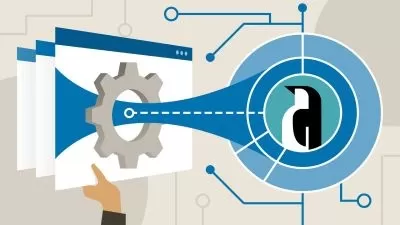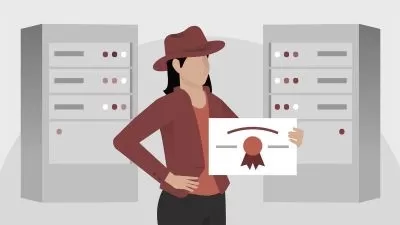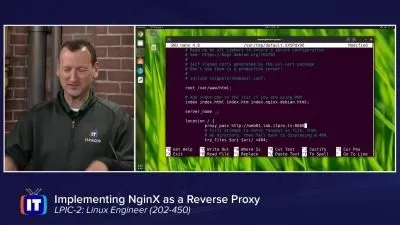Learn Linux Administration Through Practical Examples
Carmen Balan
4:05:47
Description
Linux Tips: First steps into becoming a successful Linux server administrator by learning different Linux distributions
What You'll Learn?
- At the end of this course you will be able to perform many of the daily tasks of a Linux system administrator.
- You will know how to control the boot process, deal with disk space, configure the network and troubleshoot issues.
- Along with the video lectures, there are also exercises to help you practice what you learn.
- What you will learn in this course applies to many distributions (Debian, Ubuntu, CentOS, RedHat, Fedora, etc)
Who is this for?
More details
Description
Mihai says: "This course actually gets you some clues, which you would not know by the 1st touch. Carmen Balan is a great instructor when it comes about to explaining advanced working habits."
Teodor says "The instructor was explaining the information in a good and structured way. There are practical examples, and it's very good that I can download the PDF materials and exercises! A little bit slower would be good, but overall it was a very good course"Â
Petru says "By far one of the most useful course on Linux environment. The instructor is extremely prepared. I'll recommended with all my heart."
Eddie says "Although I know 99% of what I have seen so far it has all been explained and taught very well. Excellent material for a newbie."
This Linux course was designed to share my experience as a system administrator through practical examples and scenarios. If you would like to start a career in Linux or simply improve your knowledge, this course is for you. Throughout the course, I will show you many of the tasks you would encounter when administering a Linux server.Â
Since being a system administrator, I know you might need to deal with more than only one Linux distribution, what I teach in this course, applies to many of them.
I know that the best way to learn something is by actually doing it, so I created this course by showing how to accomplish the tasks rather than just explaining how to do them in theory. Moreover, along with the video lectures, you will also find exercises to help you improve your hands-on experience. You will benefit for free from any new lectures and updates on the course.
Keep in mind that if you are not happy with the course, you can ask for a refund and take advantage of 30-Day Money-Back Guarantee.
Who this course is for:
- People who would like to take up their Linux knowledge to an upper level
- Those who want to start a career as a Linux system administrator
- Developers who need to administrate a Linux server
Mihai says: "This course actually gets you some clues, which you would not know by the 1st touch. Carmen Balan is a great instructor when it comes about to explaining advanced working habits."
Teodor says "The instructor was explaining the information in a good and structured way. There are practical examples, and it's very good that I can download the PDF materials and exercises! A little bit slower would be good, but overall it was a very good course"Â
Petru says "By far one of the most useful course on Linux environment. The instructor is extremely prepared. I'll recommended with all my heart."
Eddie says "Although I know 99% of what I have seen so far it has all been explained and taught very well. Excellent material for a newbie."
This Linux course was designed to share my experience as a system administrator through practical examples and scenarios. If you would like to start a career in Linux or simply improve your knowledge, this course is for you. Throughout the course, I will show you many of the tasks you would encounter when administering a Linux server.Â
Since being a system administrator, I know you might need to deal with more than only one Linux distribution, what I teach in this course, applies to many of them.
I know that the best way to learn something is by actually doing it, so I created this course by showing how to accomplish the tasks rather than just explaining how to do them in theory. Moreover, along with the video lectures, you will also find exercises to help you improve your hands-on experience. You will benefit for free from any new lectures and updates on the course.
Keep in mind that if you are not happy with the course, you can ask for a refund and take advantage of 30-Day Money-Back Guarantee.
Who this course is for:
- People who would like to take up their Linux knowledge to an upper level
- Those who want to start a career as a Linux system administrator
- Developers who need to administrate a Linux server
User Reviews
Rating
Carmen Balan
Instructor's Courses
Udemy
View courses Udemy- language english
- Training sessions 63
- duration 4:05:47
- English subtitles has
- Release Date 2023/02/14










